Planning your visit to India - Information & Tips
India, a land of variety and beauty is one of the world’s most amazing countries to explore. India is one of the
oldest civilizations with a rich cultural heritage. Visiting India can be a an exciting and memorable experience for
those touring India. With a little bit of trip pre-planning, tourists visiting India can have a safe and enjoyable
holiday.
India has changed considerably over the last few years. Gone are the days when westerners could not find
facilities comparable to the standards they were used to at home.
India today has world class facilities to offer that would satisfy even the most fastidious traveler. There was a time
when many consumer items were not available in India. However in today’s India, just about everything is
available.
India Trip Planning - Pre-planning Checklist
With a little bit of planning you can make your India visit an enjoyable experience. Here are some suggestions to consider to help plan your trip. 1. When applying for a visa for India, get a multiple entry visa. 2. The cost of a multiple entry visa or a single entry visa is the same. This way if you decide to visit a neighboring country. A multiple visa allows you to re-enter India. 3. Make photo copies of main pages of your passport (exclude blank pages) and take a copy with you. Leave one copy at home also as an added precaution. 4. Each visitor should carry photocopies of the face page of the traveler’s passport and the page which contains the Indian visa in order to facilitate obtaining new passports from their countries Embassy or Consulate and exit visas from the Indian government, in the event of theft or loss of the passport. 5. Take along with you a few passport size photographs. You will be surprised how handy these can be when traveling in India. If you need a permit to visit restricted areas etc you need a passport photo on the application form. I once went to Nepal from India and was told the visa would be available in Nepal on arrival. It sure was, but they wanted me to provide a passport photo when I landed in Nepal. No photo meant another hours delay and US$20 to get the photo at the airport. So pack a few photos in your wallet if you plan on exploring many Indian destinations. 6. Do not plan to arrive in India without a prior hotel booking, at least for the day of your arrival. I would make sure that written confirmation is received also and keep the confirmation document with you. 7. If you do not have a local contact meeting you at the airport then ask your hotel to send a car for you. This is the safest way. Most international flights usually land in India late at night and taking private taxis is not advisable. It is safer to stick to a taxi provided by the hotel you will be staying at. If this is not possible then take a pre-paid taxi from the airport. Check our 'Arriving in India' page for more information on pre-paid taxis from Indian airports.Selecting a sightseeing package in India:
If you are planning on taking a tour of a city. Check before paying for it that it is conducted in a language you understand and that it is humanly possible to visit all those sites in the allotted time. Many Indian sightseeing tours allow approximately only 30 minutes or so at each site and often this time is not enough to fully enjoy your visit. If you have a choice to choose between a 8 hour tour that takes you to ten sites and a tour that takes you to fifteen sites in the same time period, I would suggest you study the details and ask questions as to how much time each location will be allotted before deciding on which sightseeing tour to take. There is no point in going all the way to India and just being driven by monuments or given a few minutes to snap pictures and then being carted away. Some places charge as much as US$ 25 just for entrance fees and it is a shame if you are not given enough time to visit the sites freely. While tours are a organized way to explore the city and tourist places. The time limit factor is a negative point. Some sites require almost an entire day so to see. Keep this in mind when booking tour packages with tourism companies.Electric Voltage in India
• Electricity Voltage in India is 220 volts AC, 50 cycles. • Some upscale hotels in India do have provisions for 110 volt shavers, electric tooth brushes etc. • However, it is still a good idea to take along a voltage converter if you have small electrical gadgets that you intend to use during your trip to India. • If possible buy an electric plug adapter as the electric plugs in India are rounded. Such adapters are available for about one dollar in stores such as Radio Shack or most department stores that sell electronic goods.Medicines - Prescription Drugs while vacationing in India
If you take a prescription regularly then always take your medication with you that will last the duration of your trip to India.Foreigners - Tourists buying medicines in India
• Nothing can ruin a holiday faster than a medical problem. Most prescription medicines are sold in India over the counter by local Indian pharmacies without a doctors prescription. While it is always recommended that foreign tourists visiting India, should take prescription medicines they use with them, they may sometimes find it necessary to buy them in India. • While most medical prescription drugs are available in India. They may be named differently. For example I found that 'Altace' a popular drug for blood pressure control in North America is available in India under the name of 'Condace'. The manufacturer for Condace is Aventis Pharmaceuticals, who also manufacture Altace. Same manufacturer, different country, different name. • This is the case with many other medicines. So instead of taking a chance, it is always better to take regularly used medicines with you. It's also a good idea to surf the Internet to find out under what name a particular drug is sold in India. This can easily be done form the drug manufacturers websites, or your doctor or pharmacist may be able to help. Note this information and keep it with you during your visit. • When buying medicines in India, buy from reputable pharmacies and always ask for a proper receipt. Getting a receipt does not raise the price and the chance that someone will slip you a fake drug is reduced when you get proof of purchase. The majority of locals though, don't seem to bother with receipts. • Take a small amount of non prescription medication with you like imodium, in case you fall into temptation and eat something that disagrees with your stomach. Unless you really get careless the chances are that you should be fine.Water Safety in India
• Make sure you avoid tap water and if bottled water is not available stick to soft drinks. • Many foreign tourists while drinking only bottled water get careless when they add ice to their drinks. Ice is usually not made from bottled water. • Be selective also as to where you buy your bottled water as people have been known to refill bottles and sell them to unsuspecting travelers. Check the seal on the water bottle and buy water from reputable stores.Seasons in India
India has three major seasons. 1. Winter - November - March. Winter months are bright and pleasant, with snowfall in the northern hills. 2. Summer - April - June. Summer time (April-June) is hot in most parts of India, and it is then that the numerous hill resorts provide cool retreat. 3. Monsoon - June - September. During the monsoon season, rainfall is heavy along the West Coast between June and September, and along the East Coast between mid October and December.Foreign Currency:
Contrary to what some may tell you, foreigners have every right to pay with local Indian currency that they legally have. Foreigners do not always have to pay in foreign currency. Some people may want you to pay in foreign currency so they can profit by offering you a lower exchange rate than what is available at the banks. Foreigners traveling in India are allowed to take any amount of foreign currency, there is absolutely no restriction on the amount of money you can take into India however, where the value of foreign currency notes exceed US $ 5000 or equivalent or when the aggregate value of foreign exchange including currency exceeds US $ 10,000 or equivalent. Then a currency declaration must be made on arrival. You can view a sample currency declaration form (CDF) by clicking HERE. Foreign exchange can be in any form: traveler's checks, foreign currency notes, coins, drafts drawn on a bank in India, or letters of credit. Banks, hotels, and authorized money changers can exchange foreign money for Indian rupees. Receipts (called "encashment certificates") should be retained, as these will enable the traveler to reconvert the balance into foreign currency at the time of departure from the country, if the last receipt is not more than 30 days old. At present I personally would avoid traveling to Kashmir, The Indian state of Bihar and certain parts of Assam. When planning your India tour itinerary. Check the travel advisory section of the website of your country for travel warnings in certain areas. Links for travel advisories issued by the governments of United States of America, UK, Canada, Australia and New Zealand are available on our government travel advisory page.Pan Card Requirement in India
Pan cards in India are similar to social security numbers abroad and are issued by the Indian income tax authorities as a method to identify and keep tax records of their citizens. As per Indian law, there are certain financial transactions that require providing a persons Pan card number. Foreign tourists are exempt from this requirement, however when conducting transactions that are more than Rupees 50,000 in value, they may be asked for Pan Number. In such cases, to seek exemption a simple form has to be filled in. For more information on Pan cards in India a good source of information is http://pancardindia.net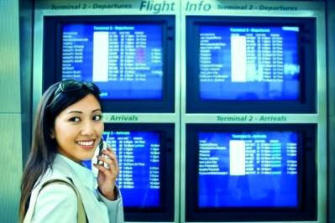
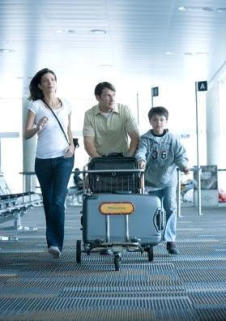
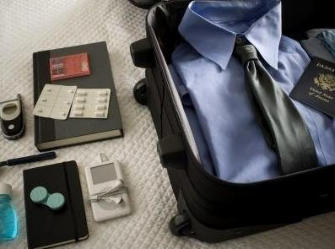
Quick Links to guides

Travel India Info
Complete Touring Guide for exploring India
We are not associated with any tour or travel business

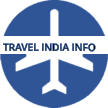
© Copyright TravelIndiaInfo.net - All rights reserved
Planning your visit to India Tips . . .
India, a land of variety and beauty is one of the world’s
most amazing countries to
explore. India is one of the
oldest civilizations with a rich
cultural heritage. Visiting
India can be a an exciting and
memorable experience for
those touring India. With a
little bit of trip pre-planning,
tourists visiting India can have
a safe and enjoyable holiday.
India has changed considerably
over the last few years. Gone
are the days when westerners could not find facilities
comparable to the standards they were used to at
home.
India today has world class facilities to offer that would
satisfy even the most fastidious traveler. There was a
time when many consumer items were not available in
India. However in today’s India, just about everything is
available.
India Trip Planning - Pre-planning
Checklist
With a little bit of planning you can make your India visit an enjoyable experience. Here are some suggestions to consider to help plan your trip. 1. When applying for a visa for India, get a multiple entry visa. 2. The cost of a multiple entry visa or a single entry visa is the same. This way if you decide to visit a neighboring country. A multiple visa allows you to re- enter India. 3. Make photo copies of main pages of your passport (exclude blank pages) and take a copy with you. Leave one copy at home also as an added precaution. 4. Each visitor should carry photocopies of the face page of the traveler’s passport and the page which contains the Indian visa in order to facilitate obtaining new passports from their countries Embassy or Consulate and exit visas from the Indian government, in the event of theft or loss of the passport. 5. Take along with you a few passport size photographs. You will be surprised how handy these can be when traveling in India. If you need a permit to visit restricted areas etc you need a passport photo on the application form. I once went to Nepal from India and was told the visa would be available in Nepal on arrival. It sure was, but they wanted me to provide a passport photo when I landed in Nepal. No photo meant another hours delay and US$20 to get the photo at the airport. So pack a few photos in your wallet if you plan on exploring many Indian destinations. 6. Do not plan to arrive in India without a prior hotel booking, at least for the day of your arrival. I would make sure that written confirmation is received also and keep the confirmation document with you. 7. If you do not have a local contact meeting you at the airport then ask your hotel to send a car for you. This is the safest way. Most international flights usually land in India late at night and taking private taxis is not advisable. It is safer to stick to a taxi provided by the hotel you will be staying at. If this is not possible then take a pre- paid taxi from the airport. Check our 'Arriving in India' page for more information on pre-paid taxis from Indian airports.Selecting a sightseeing package in India:
If you are planning on taking a tour of a city. Check before paying for it that it is conducted in a language you understand and that it is humanly possible to visit all those sites in the allotted time. Many Indian sightseeing tours allow approximately only 30 minutes or so at each site and often this time is not enough to fully enjoy your visit. If you have a choice to choose between a 8 hour tour that takes you to ten sites and a tour that takes you to fifteen sites in the same time period, I would suggest you study the details and ask questions as to how much time each location will be allotted before deciding on which sightseeing tour to take. There is no point in going all the way to India and just being driven by monuments or given a few minutes to snap pictures and then being carted away. Some places charge as much as US$ 25 just for entrance fees and it is a shame if you are not given enough time to visit the sites freely. While tours are a organized way to explore the city and tourist places. The time limit factor is a negative point. Some sites require almost an entire day or so to see. Keep this in mind when booking tour packages with tourism companies.Electric Voltage in India
• Electricity Voltage in India is 220 volts AC, 50 cycles. • Some upscale hotels in India do have provisions for 110 volt shavers, electric tooth brushes etc. • However, it is still a good idea to take along a voltage converter if you have small electrical gadgets that you intend to use during your trip to India. • If possible buy an electric plug adapter as the electric plugs in India are rounded. Such adapters are available for about one dollar in stores such as Radio Shack or most department stores that sell electronic goods.Medicines - Prescription Drugs while
vacationing in India
If you take a prescription regularly then always take your medication with you that will last the duration of your trip to India.Foreigners - Tourists buying medicines in
India
• Nothing can ruin a holiday faster than a medical problem. Most prescription medicines are sold in India over the counter by local Indian pharmacies without a doctors prescription. While it is always recommended that foreign tourists visiting India, should take prescription medicines they use with them, they may sometimes find it necessary to buy them in India. • While most medical prescription drugs are available in India. They may be named differently. For example I found that 'Altace' a popular drug for blood pressure control in North America is available in India under the name of 'Condace'. The manufacturer for Condace is Aventis Pharmaceuticals, who also manufacture Altace. Same manufacturer, different country, different name. • This is the case with many other medicines. So instead of taking a chance, it is always better to take regularly used medicines with you. It's also a good idea to surf the Internet to find out under what name a particular drug is sold in India. This can easily be done form the drug manufacturers websites, or your doctor or pharmacist may be able to help. Note this information and keep it with you during your visit. • When buying medicines in India, buy from reputable pharmacies and always ask for a proper receipt. Getting a receipt does not raise the price and the chance that someone will slip you a fake drug is reduced when you get proof of purchase. The majority of locals though, don't seem to bother with receipts. • Take a small amount of non prescription medication with you like imodium, in case you fall into temptation and eat something that disagrees with your stomach. Unless you really get careless the chances are that you should be fine.Water Safety in India
• Make sure you avoid tap water and if bottled water is not available stick to soft drinks. • Many foreign tourists while drinking only bottled water get careless when they add ice to their drinks. Ice is usually not made from bottled water. • Be selective also as to where you buy your bottled water as people have been known to refill bottles and sell them to unsuspecting travelers. Check the seal on the water bottle and buy water from reputable stores.Seasons in India
India has three major seasons. 1. Winter - November - March. Winter months are bright and pleasant, with snowfall in the northern hills. 2. Summer - April - June. Summer time (April-June) is hot in most parts of India, and it is then that the numerous hill resorts provide cool retreat. 3. Monsoon - June - September. During the monsoon season, rainfall is heavy along the West Coast between June and September, and along the East Coast between mid October and December.Foreign Currency:
Contrary to what some may tell you, foreigners have every right to pay with local Indian currency that they legally have. Foreigners do not always have to pay in foreign currency. Some people may want you to pay in foreign currency so they can profit by offering you a lower exchange rate than what is available at the banks. Foreigners traveling in India are allowed to take any amount of foreign currency, there is absolutely no restriction on the amount of money you can take into India however, where the value of foreign currency notes exceed US $ 5000 or equivalent or when the aggregate value of foreign exchange including currency exceeds US $ 10,000 or equivalent. Then a currency declaration must be made on arrival. You can view a sample currency declaration form (CDF) by clicking HERE. Foreign exchange can be in any form: traveler's checks, foreign currency notes, coins, drafts drawn on a bank in India, or letters of credit. Banks, hotels, and authorized money changers can exchange foreign money for Indian rupees. Receipts (called "encashment certificates") should be retained, as these will enable the traveler to reconvert the balance into foreign currency at the time of departure from the country, if the last receipt is not more than 30 days old. At present I personally would avoid traveling to Kashmir, The Indian state of Bihar and certain parts of Assam. When planning your India tour itinerary. Check the travel advisory section of the website of your country for travel warnings in certain areas. Links for travel advisories issued by the governments of United States of America, UK, Canada, Australia and New Zealand are available on our government travel advisory page.Pan Card Requirement in India
Pan cards in India are similar to social security numbers abroad and are issued by the Indian income tax authorities as a method to identify and keep tax records of their citizens. As per Indian law, there are certain financial transactions that require providing a persons Pan card number. Foreign tourists are exempt from this requirement, however when conducting transactions that are more than Rupees 50,000 in value, they may be asked for Pan Number. In such cases, to seek exemption a simple form has to be filled in. For more information on Pan cards in India a good source of information is http://pancardindia.net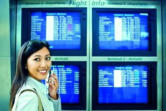
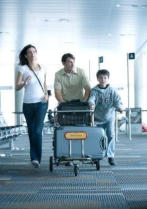
Quick Links to guides


Quick Links to guides
© Copyright TravelIndiaInfo.net - All rights reserved
























































